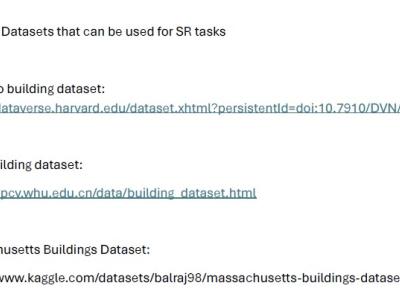
- Categories:

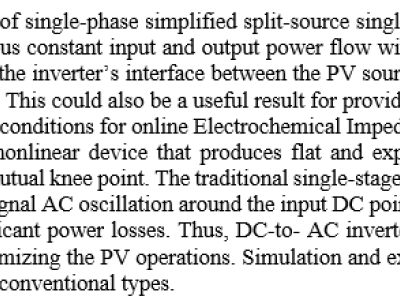
In this study, we propose a type of single-phase simplified split-source single-stage DC-to-AC boost inverter topology with the capabilities of providing continuous constant input and output power flow with low input current ripple. These features are crucial for increased efficiency during the inverter’s interface between the PV source and the load, particularly for maximum power point tracking (MPPT) applications.

This dataset is specifically designed for the recognition and localization of electric vehicle (EV) charging ports using point cloud data, rather than traditional image-based methods. It includes raw point cloud data collected from advanced sensing technologies such as LiDAR or depth cameras, along with detailed experimental records that encompass sensor parameters, pose annotations, and environmental variables.
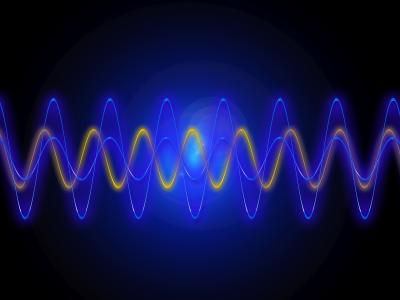
This dataset is used for machine learning. And the data set is collected in different micro-environments. In this project, ExpoM-RF 4 is used to measure the electric field strength. Four different typs of micro-environments are selected which are urban (6 high population density areas in Kuala Lumpur), suburban (7 low population density areas in Cyberjaya), park (3 park areas) and one indoor micro-environment. From the measurement campaigns, three machine learning (ML) techniques are simulated to model the Electric Field Strength in each micro-environment.

This study introduces a high-resolution UAV (Unmanned Aerial Vehicle) remote sensing image dataset aimed at advancing the development of deep learning-based farmland boundary extraction techniques and supporting the optimal deployment of Solar Insect Lights (SILs). Agricultural pests pose a significant threat to crop health and yield, while traditional pest control methods often cause environmental pollution.
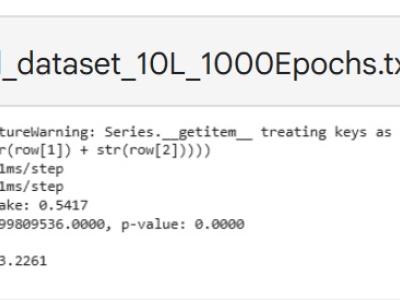
This paper explores the cryptanalysis of the ASCON algorithm, a lightweight cryptographic method designed for applications like the Internet of Things (IoT). We utilize deep learning techniques to identify potential vulnerabilities within ASCON's structure. First, we provide an overview of how ASCON operates, including key generation and encryption processes.
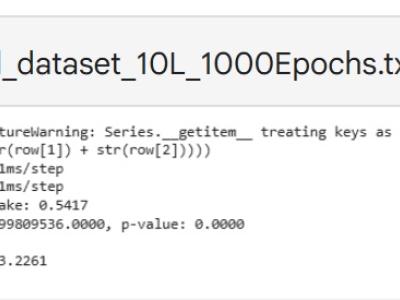
This paper explores the cryptanalysis of the ASCON algorithm, a lightweight cryptographic method designed for applications like the Internet of Things (IoT). We utilize deep learning techniques to identify potential vulnerabilities within ASCON's structure. First, we provide an overview of how ASCON operates, including key generation and encryption processes.

This dataset comprises UAV-acquired RGB image samples covering three distinct forest ecosystem types across multiple phenological seasons. Each dataset package contains high-resolution PNG-format aerial imagery paired with corresponding annotation files, maintaining consistent filenames between images and their pixel-level vegetation labels for seamless data association. The time-series acquisition strategy captures seasonal variations in canopy structure, coloration, and density within identical geographic coordinates.

Silicon nitride has greatly improved the versatility of integrated photonics technologies due to its wide transparency window, compatibility with existing CMOS-foundry infrastruc ture, and its potential for extremely low propagation loss. However, its low refractive index reduces mode confinement, increasing the minimum device footprint of components such as the widely-adopted ring resonator filter, resulting in a height ened need for reduced-bending architecture to maintain high integration density.
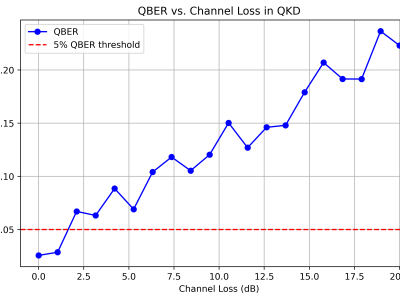
This dataset supports the research on hybrid quantum encryption by providing simulation results for Quantum Bit Error Rate (QBER) vs. Channel Loss in Quantum Key Distribution (QKD). The dataset includes numerical values used to generate the QBER vs. Channel Loss graph, which illustrates how increasing channel loss impacts quantum encryption performance. This relationship is illustrated graphically by the uploaded dataset image, which shows the critical threshold at which QBER surpasses secure transmission limits.

This dataset contains likert scale responses (on a scale of 1 to 5) from 10 instructors on nine verbal immediacy behaviours, seven non-verbal immediacy behaviours and six instructional methodological factors (V, F or Don't Know). The responses to the three sets of questions related to how these behaviours and methodological practices, from the instructors' point of view, affect their perception of social presence on the part of their students.
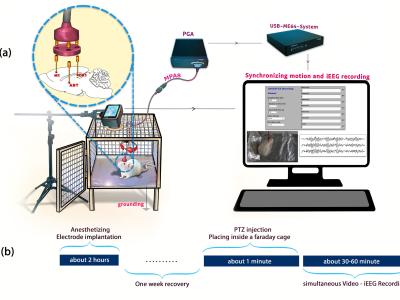
This database, collected at the Neural Engineering Laboratory, Iran University of Science and Technology, comprises iEEG recordings from Wistar rats during healthy and epileptic conditions. Recordings were collected from 5 rats (3 males, 2 females, weighing 260-378 g and aged 4-5 months). iEEG signals were recorded from 3 brain sites: motor cortex (left M1), thalamus (left ANT), and hippocampus (right CA1) of freely moving rats. As a result, for each rat, a matrix with 3 columns (representing the 3 signals) is available in this dataset.

Solar-powered insecticidal lamps have been widely used in agricultural pest control systems, where stable 4G connectivity is critical for real-time transmission of multi-source field data (soil parameters, pest images, and environmental metrics). However, the lack of reliable 4G signal strength datasets in agricultural scenarios, especially under rainfall conditions that cause signal degradation, poses a great challenge to deployment planning and network reliability.

Wetland ecosystems are affected by climate change, tidal fluctuations, and human activities, causing significant spectral variations across different times and locations. These variations challenge hyperspectral classification models, limiting their generalization in cross-domain scenarios. However, most existing hyperspectral datasets focus on a single time point or region, lacking standardized resources for cross-temporal and cross-scene studies, which restricts the application of unsupervised domain adaptation (UDA) methods in wetland remote sensing.
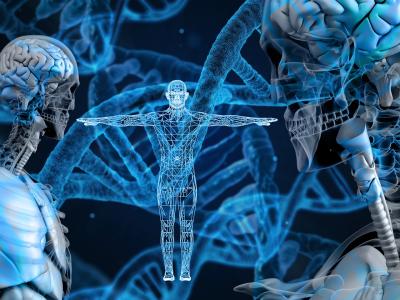
Small intestinal serosa voltage is defined as a potential in the serosa relative to the mesentery, which provides good visualization of the neural activity and the health of the electrical activity of the Interstitial Cells of Cajal that control contractions. This dataset consists of a .csv format of porcine small intestinal serosa voltage measured during ex vivo blood reperfusion, which mimics the damage to the organ during transplantation.
The dataset contains 877 records with 67 variables, documenting various COVID-19-related indicators in Indonesia. The data spans daily case statistics, including new cases, cumulative cases, recoveries, and fatalities. It also tracks government response measures, such as school and workplace closures, public event restrictions, travel controls, and mask mandates. Additionally, it includes vaccination statistics, government response indices, and mobility changes in different sectors (retail, workplaces, and residential areas).
The dataset contains 877 records with 67 variables, documenting various COVID-19-related indicators in Indonesia. The data spans daily case statistics, including new cases, cumulative cases, recoveries, and fatalities. It also tracks government response measures, such as school and workplace closures, public event restrictions, travel controls, and mask mandates. Additionally, it includes vaccination statistics, government response indices, and mobility changes in different sectors (retail, workplaces, and residential areas).

It is essential to assess functional arm use or goal-directed movement of the upper limb in neurorehabilitation. Wearable sensors help in the continuous, uninterrupted, and objective measurement of arm movements in natural settings. This dataset contains wearable inertial measurement unit data from 15 participants (10 healthy and 5 hemiparetic individuals) while they perform 15 different activities of daily living wearing two wrist bands. Tasks included fine finger manipulation tasks like writing, using a mobile phone’s touchscreen, walking for patients in wheelchairs, etc.
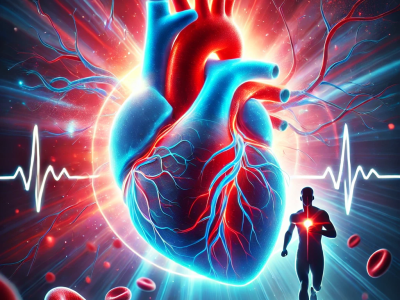
This dataset comprises 2 million synthetic samples generated using the Variational Autoencoder-Generative Adversarial Network (VAE-GAN) technique. The dataset is designed to facilitate cardiovascular disease prediction through various demographic, physical, and health-related attributes. It contains essential physiological and behavioral indicators that contribute to cardiovascular health.
Dataset Description The dataset consists of the following features:
Age (int, days): The age of the individual.
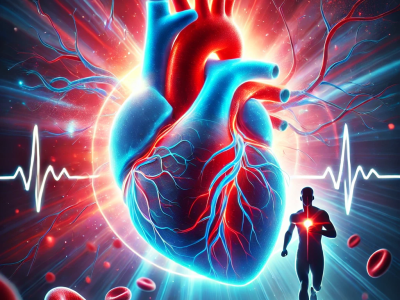
This dataset comprises 2 million synthetic samples generated using the Variational Autoencoder-Generative Adversarial Network (VAE-GAN) technique. The dataset is designed to facilitate cardiovascular disease prediction through various demographic, physical, and health-related attributes. It contains essential physiological and behavioral indicators that contribute to cardiovascular health.
Dataset Description The dataset consists of the following features:
Age (int, days): The age of the individual.

LIVE-Viasat Real-World Satellite QoE Database contains 179 videos from real-world streaming, encompassing a range of distortions. Enhanced by a study with 54 participants providing detailed QoE feedback, our work not only provides a rich analysis of the determinants of subjective QoE but also delves into how various streaming impairments influence user behavior, thereby offering a more holistic understanding of user satisfaction.

LIVE-Viasat Real-World Satellite QoE Database contains 179 videos from real-world streaming, encompassing a range of distortions. Enhanced by a study with 54 participants providing detailed QoE feedback, our work not only provides a rich analysis of the determinants of subjective QoE but also delves into how various streaming impairments influence user behavior, thereby offering a more holistic understanding of user satisfaction.

The Biomolecular Adsorption Database, BAD, is an archive of the data regarding protein adsorption on flat solid surfaces, as reported in peer-reviewed literature.
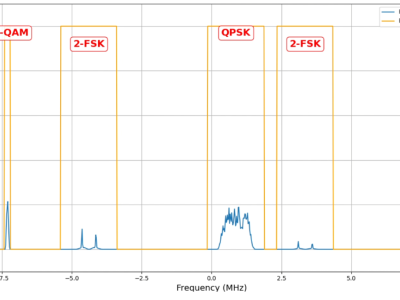
The following dataset includes two types of RF IQ samples: Synthetic and Indoor Over-The-Air datasets.
This dataset has been used in a conference paper published in 2025 DySPAN: I Can’t Believe It’s Not Real: CV-MuSeNet: Complex-Valued Multi-Signal Segmentation.
Paper abstract: